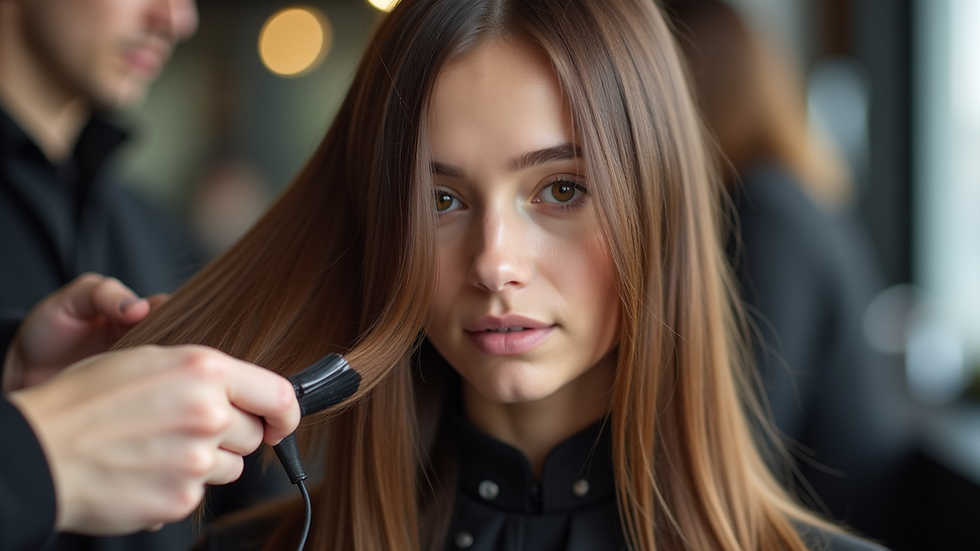Understanding Effective Solutions for Hair Care Challenges
- Tangles Farnham
- Aug 26
- 3 min read
Hair care challenges affect many people, regardless of age or gender. From dryness and breakage to thinning and hair loss, these issues can impact confidence and overall well-being. Fortunately, there are effective solutions available that address these problems and promote healthier, stronger hair. This article explores practical approaches to common hair care challenges and delves into the latest advancements in hair restoration.
Common Hair Care Challenges and How to Address Them
Hair care challenges vary widely, but some of the most frequent issues include dryness, split ends, frizz, and scalp problems. Understanding the root causes of these problems is essential for finding the right solutions.
Dryness and Breakage: Often caused by over-washing, heat styling, or harsh chemical treatments. To combat dryness, use gentle shampoos, deep conditioning treatments, and limit heat exposure.
Split Ends: Result from mechanical damage or lack of moisture. Regular trims and nourishing hair masks can help prevent split ends.
Frizz: Caused by humidity and damaged hair cuticles. Using anti-frizz serums and hydrating conditioners can smooth the hair surface.
Scalp Issues: Dandruff, itchiness, and sensitivity may arise from product buildup or skin conditions. Scalp exfoliation and medicated shampoos can restore scalp health.
Incorporating a balanced diet rich in vitamins and minerals also supports hair health from within. Drinking plenty of water and avoiding excessive stress contribute to maintaining strong hair.

Exploring Hair Restoration and Its Importance
Hair restoration has become a vital solution for those experiencing hair thinning or loss. It encompasses a range of treatments designed to stimulate hair growth, improve hair density, and restore confidence.
Hair loss can be caused by genetics, hormonal changes, medical conditions, or lifestyle factors. Identifying the underlying cause is crucial for selecting the most effective treatment. Common hair restoration options include:
Topical Treatments: Minoxidil and other medicated solutions that promote hair follicle activity.
Oral Medications: Prescription drugs that address hormonal imbalances contributing to hair loss.
Non-Surgical Procedures: Platelet-rich plasma (PRP) therapy and low-level laser therapy stimulate natural hair growth.
Surgical Options: Hair transplant surgeries relocate healthy hair follicles to thinning areas.
Each method has its benefits and limitations, and a professional consultation is recommended to tailor the approach to individual needs.

What is the Best Hair Restoration Method?
Determining the best hair restoration method depends on several factors, including the extent of hair loss, patient health, and personal preferences. No single solution fits everyone, but combining treatments often yields the best results.
Mild to Moderate Hair Loss: Topical treatments like minoxidil combined with lifestyle changes can be effective.
Advanced Hair Loss: Surgical hair transplants or PRP therapy may be necessary to achieve noticeable improvement.
Maintenance: Ongoing care with medicated shampoos and supplements helps sustain results.
It is important to set realistic expectations and understand that hair restoration is a gradual process. Consulting with a specialist ensures a customised plan that maximises success.
For more detailed insights on various options, exploring hair restoration techniques can provide valuable information.
Practical Tips for Maintaining Healthy Hair
Beyond restoration, maintaining healthy hair daily is essential to prevent future problems. Here are some actionable recommendations:
Choose the Right Products: Use shampoos and conditioners suited to your hair type and concerns.
Limit Heat Styling: Reduce the use of straighteners, curling irons, and blow dryers to prevent damage.
Protect Hair from Environmental Stressors: Wear hats or use UV protection sprays when exposed to sun or pollution.
Avoid Tight Hairstyles: Styles that pull on the scalp can cause traction alopecia.
Regular Scalp Care: Massage the scalp to improve circulation and use gentle exfoliation to remove buildup.
Balanced Nutrition: Include proteins, omega-3 fatty acids, and vitamins like biotin and vitamin D in your diet.
Implementing these habits consistently can significantly improve hair texture, strength, and appearance.

Embracing a Holistic Approach to Hair Health
Addressing hair care challenges and restoration requires a holistic approach that combines professional treatments with everyday care. Mental well-being also plays a role, as stress can exacerbate hair loss.
Stress Management: Techniques such as meditation, exercise, and adequate sleep support overall health.
Regular Check-ups: Monitoring hormone levels and underlying health conditions can prevent hair issues.
Personalised Hair Care Routine: Tailoring products and treatments to your specific hair type and concerns ensures optimal results.
By integrating these elements, individuals can achieve lasting improvements in hair health and confidence.
Taking proactive steps to understand and address hair care challenges is key to maintaining vibrant, healthy hair. Whether through advanced hair restoration methods or simple daily habits, effective solutions are within reach. For those seeking expert advice and treatment options, exploring professional resources and consultations is highly recommended.




Comments